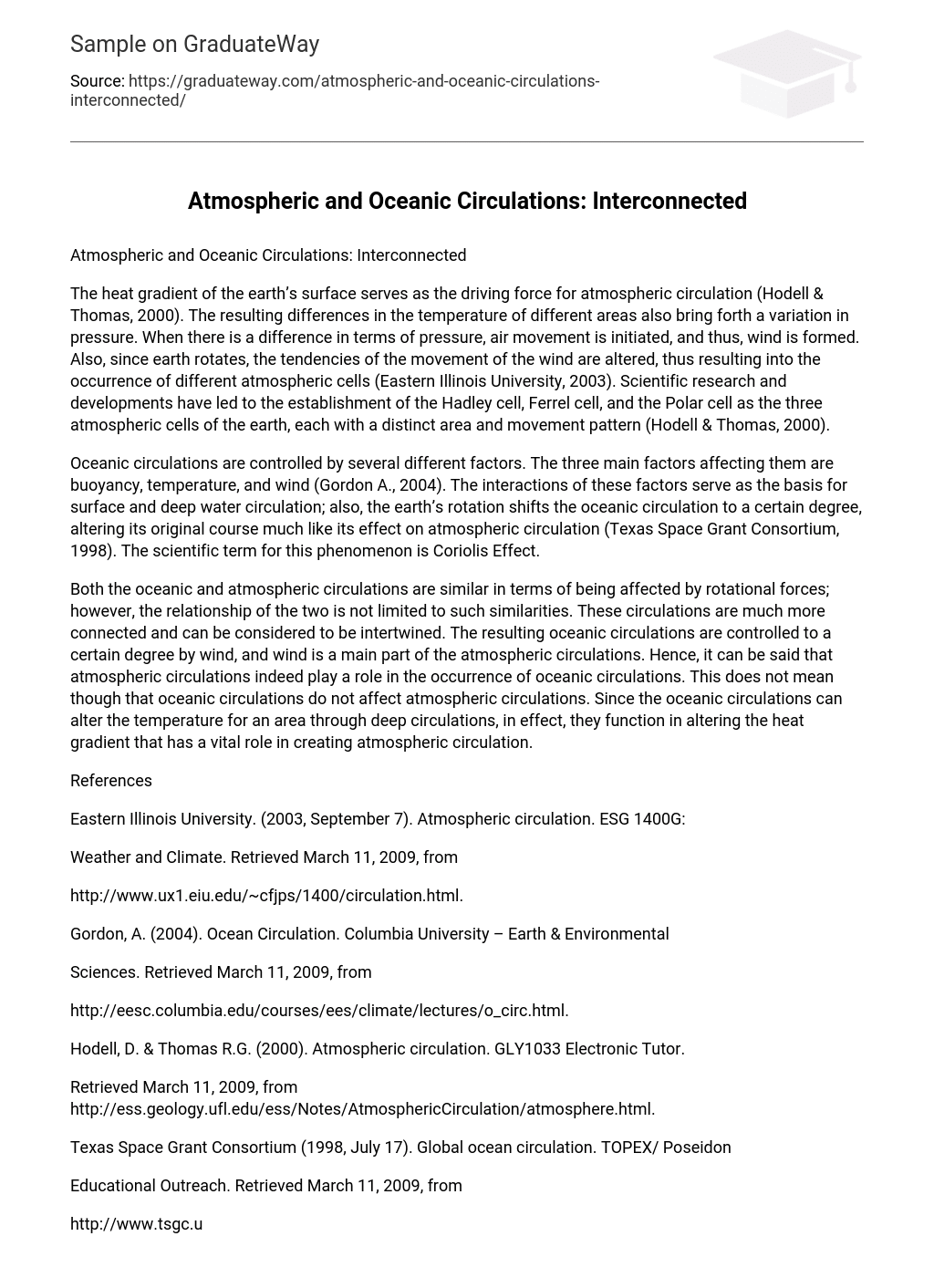The heat gradient of the earth’s surface serves as the driving force for atmospheric circulation (Hodell & Thomas, 2000). The resulting differences in the temperature of different areas also bring forth a variation in pressure. When there is a difference in terms of pressure, air movement is initiated, and thus, wind is formed. Also, since earth rotates, the tendencies of the movement of the wind are altered, thus resulting into the occurrence of different atmospheric cells (Eastern Illinois University, 2003). Scientific research and developments have led to the establishment of the Hadley cell, Ferrel cell, and the Polar cell as the three atmospheric cells of the earth, each with a distinct area and movement pattern (Hodell & Thomas, 2000).
Oceanic circulations are controlled by several different factors. The three main factors affecting them are buoyancy, temperature, and wind (Gordon A., 2004). The interactions of these factors serve as the basis for surface and deep water circulation; also, the earth’s rotation shifts the oceanic circulation to a certain degree, altering its original course much like its effect on atmospheric circulation (Texas Space Grant Consortium, 1998). The scientific term for this phenomenon is Coriolis Effect.
Both the oceanic and atmospheric circulations are similar in terms of being affected by rotational forces; however, the relationship of the two is not limited to such similarities. These circulations are much more connected and can be considered to be intertwined. The resulting oceanic circulations are controlled to a certain degree by wind, and wind is a main part of the atmospheric circulations. Hence, it can be said that atmospheric circulations indeed play a role in the occurrence of oceanic circulations. This does not mean though that oceanic circulations do not affect atmospheric circulations. Since the oceanic circulations can alter the temperature for an area through deep circulations, in effect, they function in altering the heat gradient that has a vital role in creating atmospheric circulation.
References
Eastern Illinois University. (2003, September 7). Atmospheric circulation. ESG 1400G:
Weather and Climate. Retrieved March 11, 2009, from
http://www.ux1.eiu.edu/~cfjps/1400/circulation.html.
Gordon, A. (2004). Ocean Circulation. Columbia University – Earth & Environmental
Sciences. Retrieved March 11, 2009, from
http://eesc.columbia.edu/courses/ees/climate/lectures/o_circ.html.
Hodell, D. & Thomas R.G. (2000). Atmospheric circulation. GLY1033 Electronic Tutor.
Retrieved March 11, 2009, from http://ess.geology.ufl.edu/ess/Notes/AtmosphericCirculation/atmosphere.html.
Texas Space Grant Consortium (1998, July 17). Global ocean circulation. TOPEX/ Poseidon
Educational Outreach. Retrieved March 11, 2009, from
http://www.tsgc.utexas.edu/topex/ocean.html.





